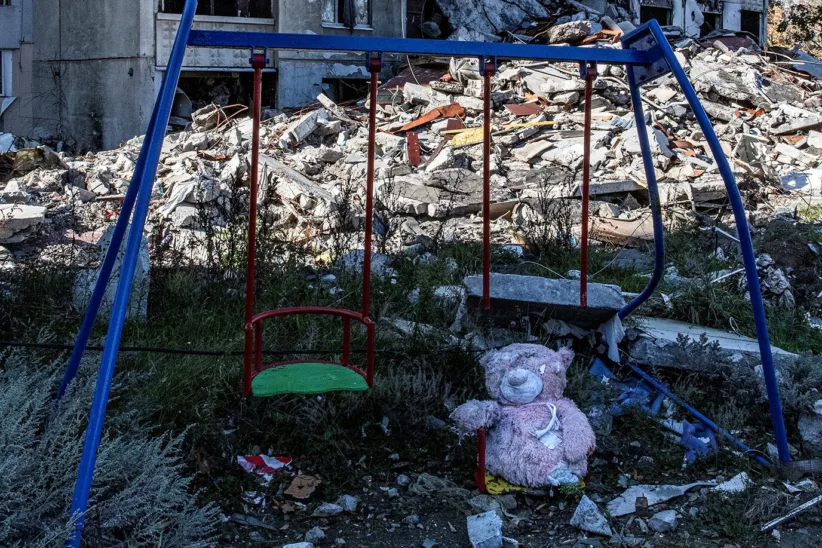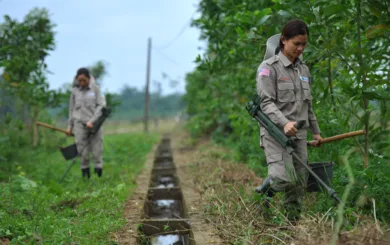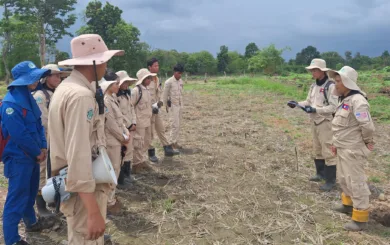Record clearance of cluster munitions achieved – but protecting the ban has never been more urgent
This week, Norwegian People’s Aid (NPA) is present in Geneva as governments, international organisations, and civil society meet for the 13th Meeting of States Parties to the Convention on Cluster Munitions (CCM). NPA’s message is clear: These weapons were banned for a reason and it’s more urgent than ever for the international ban on cluster munitions to be defended, strengthened, and universalized.

The new Cluster Munition Monitor 2025 highlights the devastating humanitarian toll of cluster munitions. All reported casualties from cluster munitions in 2024 were civilians, nearly half of them children.
At least 314 people were killed or injured worldwide, including 193 civilians killed in attacks in Ukraine.
Record clearance progress—but uneven
According to the Mine Action Review Clearing Cluster Munition Remnants 2025, global clearance reached a record 227.9 km² in 2024, with more than 133,600 unexploded submunitions destroyed. Lao PDR alone cleared 71.7 km², the largest annual figure by any State Party since the CCM’s adoption in 2008.
These results demonstrate both the scale of the challenge and the tangible difference that sustained clearance efforts make for communities living with the deadly legacy of cluster munitions. Each square meter cleared represents land returned for safe use, and each submunition destroyed means one less threat to civilians.
But progress is uneven. No State Party is currently on track to meet its clearance obligations by the 2026 Review Conference. Sustained funding and political will are urgently needed.
A strong international norm under pressure
Since 2008, the CCM has established a powerful norm: 111 states have joined, nearly 1.5 million cluster munitions destroyed, and no State Party has ever used them.
But this norm is now under pressure. Lithuania withdrew from the CCM earlier this year—the first country ever to leave a humanitarian disarmament treaty. Russia, Ukraine, Myanmar, and Syria—all outside the convention—continued to use cluster munitions in 2024, with the devastating result of a rise in civilian casualties.
The United States transferred such weapons to Ukraine at least seven times between July 2023 and October 2024.

Revisiting the M85 study: lessons still relevant
As part of this week’s meeting, NPA is also re-releasing its landmark 2007 report M85 – An analysis of reliability. The study was pivotal in shaping the negotiations that led to the CCM, demonstrating that even the most “advanced” submunitions—equipped with self-destruct mechanisms—produced unacceptable numbers of duds in real combat.
Nearly two decades later, these lessons remain relevant and urgent. No new submunition technology has disproven the core findings:
- Failure rates in combat are far higher than in testing.
- Even at a hypothetical 1% failure rate, tens of thousands of unexploded duds would remain—a catastrophic legacy for civilians.
- Complex self-destruct mechanisms do not solve the problem; they add new risks.
“Cluster munitions are weapons of the past. Eroding the humanitarian norms that underpin the CCM is self-defeating: short-term tactical benefit will be dwarfed by the resulting long-term civilian suffering and weakened security”, said Østern.
Reaffirming support and looking ahead
NPA urged all states to reaffirm their commitment to the CCM, to strengthen its implementation, and to prevent any erosion of the humanitarian norms it enshrines.
In Geneva, NPA also congratulated Vanuatu for acceding to the convention this year, calling it a strong signal of leadership at a time when others are moving away from international law.
The Third Review Conference for the CCM in Lao PDR in 2026 will be a milestone for the CCM. It will set the course for the next five years of work on clearance, victim assistance, and universalization. NPA stands ready to support this process and calls on states to seize the opportunity to recommit to a cluster munition-free world.


M85 study Revisited: Reaffirming the Case Against Cluster Munitions

Global clearance of cluster munition remnants reaches record high

